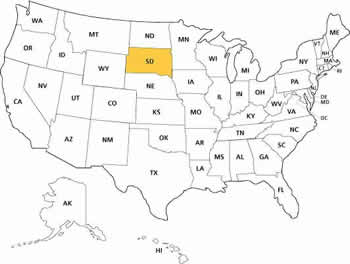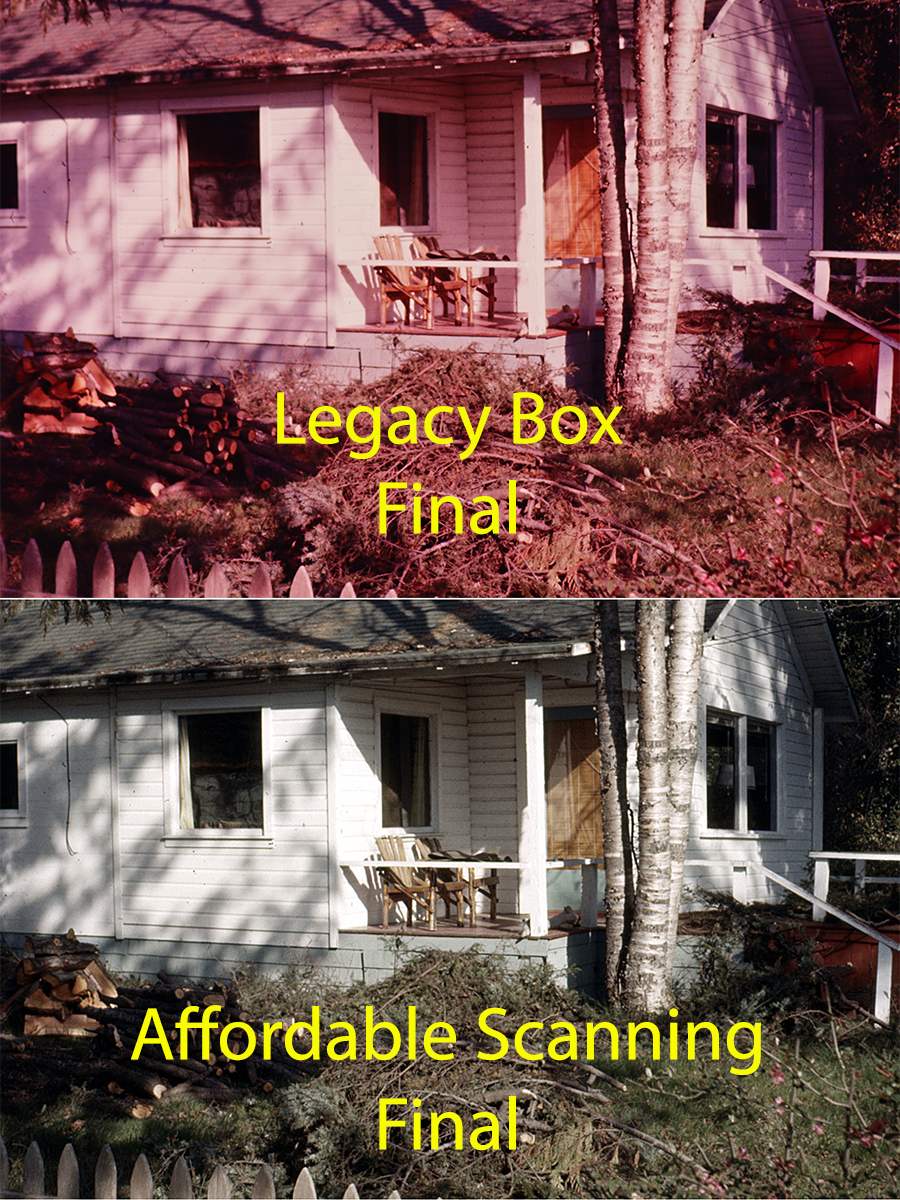Expert Slide and Photo Scanning Since 2002.
4,000 ppi Scanning and Premium Photoshop
Editing On Every Scan. 49¢ most slides.
We also can make PRINTS from your Slides.
www.Slides.Pics
South Dakota 35mm Slide, Photo & Film Scanning

All Scanning companies will NOT give you the same results, Click Here.
While we do NOT have a local office in South Dakota, Affordable Scanning Services LLC has provided services for customers all over South Dakota, including Sioux Falls, Rapid City, Aberdeen, Watertown, Brookings, Mitchell, Pierre, Yankton, Huron, Vermillion, and the United States and Canada since 2002. In all that time we have worked with multiple people, university's and businesses with many different needs and end results. Our customers are very important to us and they are our best salespeople.
Some of the newer scanning companies, unable to compete with our services, have resorted to sending their customer's 35mm slides, photos and films to India or other third world countries. That is bad enough but what we think is really underhanded, is that they are not up front about this minor little detail. Most of their customers have no idea that their family photo collction is being loaded into a cargo plane and flown 7,000 miles over the ocean to India. And that may be the safest part of the trip.
At Affordable 35mm Slide Scanning, your job does not leave our premises,in Waupun Wisconsin, until we return ship to you. We treat your precious photo collection just like it was our own and I can tell you for certain, that we would never be sending our heirloom family photos to a thirdworld sweatshop in order to save a few dollars.
All jobs are worked by 100% USA citizens who are talented and skillful and they really are artists at heart. They work your family photos just like they were working their very own photos. We realize that this is the only time that you are going to be converting your slides and photos to digital and we are going to make it a good Experience for you.
South Dakota History
"Human beings have lived in what is today South Dakota for at least several thousand years. French and other European explorers in the 1700s encountered a variety of groups including the Omaha and Arikara (Ree), but by the early 1800s the Sioux (Dakota, Lakota, and Nakota) were dominant. In 1743, the LaVerendrye brothers buried a plate near the site of modern day Pierre, claiming the region for France as part of greater Louisiana.
In 1803, the United States purchased the Louisiana Territory from Napoleon, and President Thomas Jefferson organized a group commonly referred to as the "Lewis and Clark Expedition" to explore the newly-acquired region. In 1817, an American fur trading post was set up at present-day Fort Pierre, beginning continuous American settlement of the area.[25] In 1855, the U.S. Army bought Fort Pierre but abandoned it the following year in favor of Fort Randall to the south. Settlement by Americans and Europeans was by this time increasing rapidly, and in 1858 the Yankton Sioux signed the 1858 Treaty, ceding most of present-day eastern South Dakota to the United States.
Deadwood, like many other Black Hills towns, was founded after the discovery of goldLand speculators founded two of eastern South Dakota's largest present-day cities: Sioux Falls in 1856 and Yankton in 1859. In 1861, Dakota Territory was established by the United States government (this initially included North Dakota, South Dakota, and parts of Montana and Wyoming). Settlers from Scandinavia, Germany, Ireland, and Russia, as well as elsewhere in Europe and from the eastern U.S. states increased from a trickle to a flood, especially after the completion of an eastern railway link to the territorial capital of Yankton in 1872, and the discovery of gold in the Black Hills in 1874 during a military expedition led by George A. Custer. This expedition took place despite the fact that the western half of present day South Dakota had been granted to the Sioux by the Treaty of Fort Laramie (1868) as part of the Great Sioux Reservation. The Sioux declined to grant mining rights or land in the Black Hills, and war broke out after the U.S. failed to stop white miners and settlers from entering the region. The Sioux were eventually defeated and settled on reservations within South Dakota and North Dakota.
An increasing population caused Dakota Territory to be divided in half and a bill for statehood for North Dakota and South Dakota (as well as Montana and Washington) titled the Enabling Act of 1889 was passed on February 22, 1889 during the Administration of Grover Cleveland. It was left to his successor, Benjamin Harrison, to sign proclamations formally admitting North and South Dakota to the Union on November 2, 1889. Harrison directed his Secretary of State James G. Blaine to shuffle the papers and obscure from him which he was signing first and the actual order went unrecorded.
On December 29, 1890, the Wounded Knee Massacre occurred on the Pine Ridge Indian Reservation. Commonly cited as the last major armed conflict between the United States and the Sioux Nation, the massacre resulted in the deaths of an estimated 300 Sioux, many of them women and children. 25 U.S. soldiers were also killed in the conflict.
A South Dakota farm during the Dust Bowl, 1936During the 1930s, several economic and climatic conditions combined with disastrous results for South Dakota. A lack of rainfall, extremely high temperatures and over-cultivation of farmland produced what was known as the Dust Bowl in South Dakota and several other plains states. Fertile topsoil was blown away in massive dust storms, and several harvests were completely ruined. The experiences of the Dust Bowl, coupled with local bank foreclosures and the general economic effects of the Great Depression resulted in many South Dakotans leaving the state. The population of South Dakota declined by more than seven percent between 1930 and 1940.
Economic stability returned with the U.S. entry into World War II in 1941, when demand for the state's agricultural and industrial products grew as the nation mobilized for war. In 1944, the Pick-Sloan Plan was passed as part of the Flood Control Act of 1944 by the U.S. Congress, resulting in the construction of six large dams on the Missouri River, four of which are at least partially located in South Dakota. Flood control, hydroelectricity and recreational opportunities such as boating and fishing are provided by the dams and their reservoirs.
In recent decades, South Dakota has transformed from a state dominated by agriculture to one with a more diversified economy. The tourism industry has grown considerably since the completion of the interstate system in the 1960s, with the Black Hills being especially impacted. The financial service industry began to grow in the state as well, with Citibank moving its credit card operations from New York to Sioux Falls in 1981, a move that has since been followed by several other financial companies.[33] In 2007, the site of the recently-closed Homestake gold mine near Lead was chosen as the location of a new underground research facility. Despite a growing state population and recent economic development, many rural areas have been struggling over the past 50 years with locally declining populations and the emigration of educated young adults to larger South Dakota cities, such as Rapid City or Sioux Falls, or to other states."
From:
https://en.wikipedia.org/wiki/South_Dakota
|
About Our Company Copyright 2024 |
|
Email: Click Here After hours you will get a quicker response by using email. We answer email at ALL hours. Telephone messages are replied to during business hours. Affordable Scanning Services LLC 400 Bittersweet Lane Waupun, WI 53963
|
 Home
Home Order Forms
Order Forms



